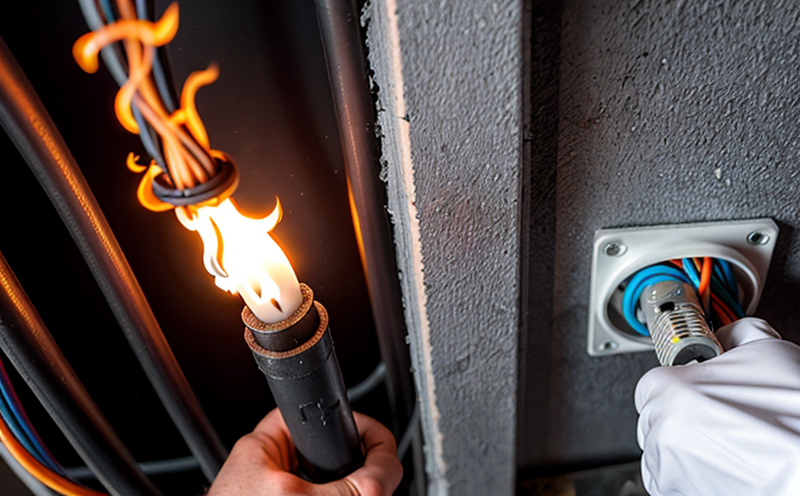Heat Release and Flame Spread Testing for Cables
In today's world, where fire safety is a paramount concern across all sectors, ensuring that cables and wiring are flame-resistant is critical. Heat release and flame spread testing plays an essential role in this regard by evaluating the flammability characteristics of cable materials under controlled conditions. This service is particularly important for industries like construction, infrastructure, and telecommunications, where the integrity of electrical systems during a fire event can mean life or death.
Heat release rate (HRR) and flame spread index are two key parameters that this testing evaluates to ensure compliance with relevant international standards such as UL, NFPA, and IEC. These parameters help in assessing how rapidly the cable material releases heat during a fire and how its surface spreads flames, respectively.
During this testing procedure, cables are subjected to controlled combustion under specific conditions that simulate real-world scenarios. The specimen is placed within a specialized chamber where it is exposed to an ignition source. The heat release rate is measured by monitoring the amount of heat released per unit time as the cable burns. Flame spread index is determined by observing how far and fast flames travel along its surface.
The results obtained from these tests are crucial for manufacturers, ensuring that their products meet stringent safety requirements set forth by regulatory bodies worldwide. Compliance with standards like UL 1685 or IEC 60332-1 provides assurance to stakeholders about the reliability and safety of electrical components used in critical applications.
For quality managers looking into improving product performance, understanding these metrics can lead to better design decisions aimed at enhancing fire resistance. Compliance officers will find this service indispensable for ensuring adherence to local regulations governing building codes and material flammability limits. R&D engineers benefit from detailed insights that help refine materials and manufacturing processes towards more effective solutions.
Additionally, procurement teams can leverage the outcomes of these tests when selecting suppliers who meet industry benchmarks for flame retardant performance. By investing in robust testing protocols early on, organizations not only protect themselves against potential liability risks but also contribute positively to public safety initiatives.
To summarize, heat release and flame spread testing for cables is more than just a compliance exercise; it represents a proactive approach towards safeguarding lives and property by identifying vulnerabilities within electrical installations. With accurate data provided through rigorous testing procedures, stakeholders gain confidence that the products they choose are safe and reliable in challenging situations.
- Benefits: Enhances fire safety, improves product performance, ensures regulatory compliance, supports R&D efforts
Applied Standards
The testing of heat release and flame spread for cables adheres strictly to several internationally recognized standards which include:
- UL 1685: This standard covers the test methods for determining the heat release rate and smoke density of plastic materials used in cable insulation.
- IEC 60332-1: It specifies requirements for the ignition characteristics of single insulated wires and cables with overall braided or overall woven coverings.
These standards provide a framework that ensures consistency across different laboratories conducting similar tests, thereby promoting trust among stakeholders involved in the evaluation process. Compliance with these guidelines guarantees that the results obtained are valid and can be relied upon for decision-making purposes.
Quality and Reliability Assurance
At our laboratory, we take pride in delivering accurate, reliable, and consistent test results every time. Our team of experts uses state-of-the-art equipment calibrated according to ISO/IEC 17025 standards to ensure precision and accuracy throughout the entire testing process.
We follow strict protocols laid out by recognized international bodies such as ASTM International and the European Committee for Standardization (CEN) when performing these tests. This adherence ensures that our findings are not only precise but also relevant to real-world conditions, providing valuable information that can be used by clients in their product development lifecycle.
Our commitment to excellence extends beyond just technical proficiency; we prioritize customer satisfaction and trust. By offering transparent communication channels and timely feedback reports, we strive to build long-term relationships based on mutual respect and understanding.





